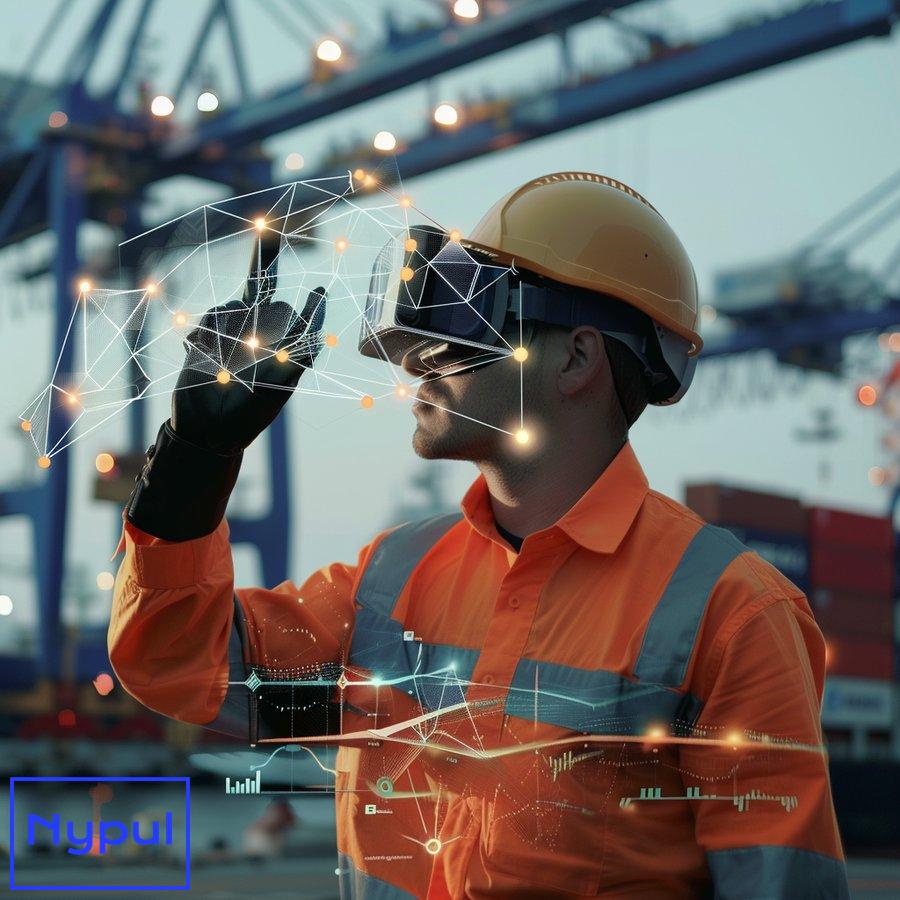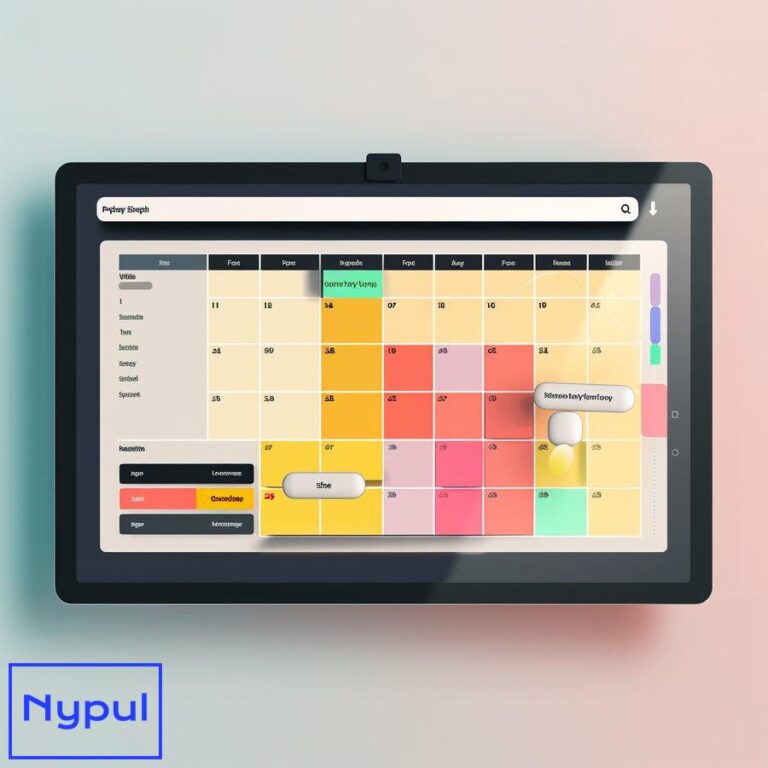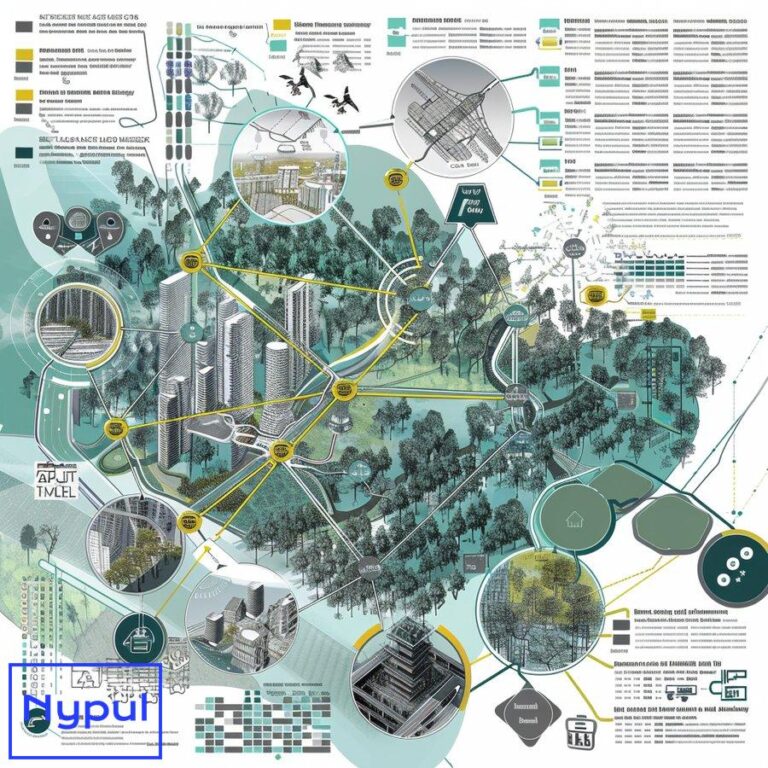What Is the Blockchain Potential for Port Logistics
What is blockchain and how does it relate to port logistics?
Blockchain technology represents a revolutionary approach to data management and transaction processing that has significant implications for port logistics. At its core, blockchain is a distributed ledger system that records transactions across a network of computers in a secure, transparent, and immutable manner. This decentralized structure eliminates the need for intermediaries and creates a single source of truth that all participants can trust.
In the context of port logistics, blockchain offers solutions to many longstanding challenges:
Data Fragmentation
Ports deal with a complex web of stakeholders including shipping lines, freight forwarders, customs authorities, and trucking companies. Traditionally, each entity maintains its own records, leading to data silos and inefficiencies. Blockchain provides a shared ledger where all relevant parties can access and update information in real-time.
Documentation Bottlenecks
The movement of goods through ports involves extensive paperwork like bills of lading, customs declarations, and certificates of origin. Blockchain enables the digitization and secure sharing of these documents, reducing processing times and the risk of fraud or errors.
Lack of Visibility
Tracking the status and location of cargo as it moves through the port ecosystem can be challenging. Blockchain creates an immutable record of each transaction and movement, offering end-to-end visibility to authorized parties.
Trust and Security Concerns
Ports handle sensitive commercial and regulatory information. Blockchain’s cryptographic security and consensus mechanisms ensure data integrity and build trust among participants.
To illustrate how blockchain relates to key port logistics processes, consider the following table:
| Port Logistics Process | Traditional Approach | Blockchain-Enabled Approach |
|---|---|---|
| Cargo Documentation | Paper-based, prone to delays and errors | Digital, instantly verifiable documents stored on blockchain |
| Container Tracking | Limited visibility, manual updates | Real-time tracking with IoT integration and blockchain records |
| Customs Clearance | Time-consuming document checks | Automated clearance based on trusted blockchain data |
| Payment Processing | Multiple intermediaries, slow settlements | Smart contracts for instant, secure transactions |
| Supply Chain Coordination | Fragmented communication | Shared ledger for seamless information exchange |
By leveraging blockchain technology, ports can transform their operations from siloed and paper-heavy processes to streamlined, digital, and collaborative ecosystems. This shift promises to enhance efficiency, reduce costs, and improve the overall competitiveness of ports in the global supply chain.
How can blockchain enhance transparency and efficiency in port operations?
Blockchain technology holds immense potential to revolutionize port operations by dramatically improving transparency and efficiency. These enhancements stem from blockchain’s core attributes of decentralization, immutability, and real-time data sharing.

Enhanced Transparency
Blockchain creates an unprecedented level of transparency in port operations:
Shared Visibility
All authorized participants in the port ecosystem can access a single, shared version of truth. This eliminates information asymmetry and reduces disputes.
Audit Trail
Every transaction and data point recorded on the blockchain is timestamped and linked to previous entries, creating an unalterable audit trail. This feature is particularly valuable for regulatory compliance and dispute resolution.
Provenance Tracking
Blockchain enables the tracking of goods from origin to destination, providing clear provenance information. This is crucial for verifying the authenticity of goods and ensuring compliance with regulations.
Improved Efficiency
The efficiency gains from blockchain implementation in ports are substantial:
Streamlined Documentation
Digital documents stored on the blockchain can be instantly verified and shared, eliminating the need for manual checks and reducing processing times.
Automated Processes
Smart contracts on the blockchain can automate many routine tasks, such as releasing containers upon payment confirmation or triggering customs inspections based on predefined criteria.
Reduced Intermediaries
Blockchain’s peer-to-peer nature can eliminate or reduce the role of intermediaries in many port processes, leading to faster transactions and lower costs.
Real-time Updates
As information is updated on the blockchain in real-time, all parties have immediate access to the latest data, enabling quicker decision-making and more responsive operations.
To quantify the potential impact of blockchain on port operations, consider the following table:
| Metric | Traditional Operations | Blockchain-Enabled Operations | Potential Improvement |
|---|---|---|---|
| Document Processing Time | 2-3 days | 1-4 hours | 80-95% reduction |
| Container Release Time | 6-8 hours | 1-2 hours | 75-85% reduction |
| Customs Clearance Time | 24-48 hours | 2-4 hours | 90-95% reduction |
| Data Entry Errors | 10-15% | <1% | 90-95% reduction |
| Supply Chain Visibility | Limited | End-to-end | Significant improvement |
These improvements translate into tangible benefits for ports and their stakeholders:
Increased Throughput
Faster processing times mean ports can handle more cargo with existing infrastructure.
Cost Savings
Reduced paperwork, fewer errors, and streamlined processes lead to significant cost reductions.
Improved Customer Satisfaction
Faster, more transparent operations result in better service for shippers and consignees.
Enhanced Competitiveness
Ports that leverage blockchain can differentiate themselves in a competitive global market.
By enhancing both transparency and efficiency, blockchain technology has the potential to transform port operations, creating more agile, responsive, and competitive port ecosystems.
What specific applications of blockchain are transforming port logistics?
Blockchain technology is being applied in various innovative ways to transform port logistics. These applications address specific pain points in the industry and leverage blockchain’s unique capabilities to create more efficient, secure, and transparent processes.

Smart Contracts for Automated Transactions
Smart contracts are self-executing agreements with the terms directly written into code. In port logistics, they are revolutionizing how transactions are conducted:
Automated Payments
Smart contracts can trigger payments automatically when predefined conditions are met, such as the arrival of a container at a specific location or the completion of a customs inspection.
Dynamic Pricing
Ports can implement smart contracts that adjust pricing based on real-time factors like congestion levels or time of day, optimizing resource allocation.
Service Level Agreements
Smart contracts can enforce and monitor service level agreements between ports and their partners, automatically applying penalties or rewards based on performance.
Blockchain-Based Bills of Lading
The bill of lading, a critical document in shipping, is being transformed by blockchain:
Digital Issuance
Blockchain enables the creation of digital bills of lading that can be instantly transferred and verified.
Fraud Prevention
The immutable nature of blockchain records significantly reduces the risk of fraudulent bills of lading.
Faster Transfers
Ownership of goods can be transferred more quickly and securely using blockchain-based bills of lading.
Container Tracking and Management
Blockchain combined with IoT devices is enhancing container tracking capabilities:
Real-Time Location Data
IoT sensors on containers can record location data directly to the blockchain, providing real-time visibility.
Condition Monitoring
Blockchain can securely store data on container conditions (temperature, humidity, etc.), crucial for sensitive cargo.
Automated Alerts
Smart contracts can trigger alerts based on predefined conditions, such as delays or deviations from planned routes.
Customs and Compliance Management
Blockchain is streamlining customs processes and enhancing compliance:
Pre-Arrival Processing
Customs authorities can access verified shipping information on the blockchain before cargo arrives, speeding up clearance.
Automated Compliance Checks
Smart contracts can automatically verify compliance with regulations based on blockchain data.
Secure Information Sharing
Blockchain enables secure sharing of sensitive customs information between relevant parties.
Port Community Systems Integration
Blockchain is being integrated with existing port community systems to enhance their capabilities:
Single Data Entry
Information entered once on the blockchain can be shared across the entire port community, reducing duplication.
Interoperability
Blockchain can facilitate seamless data exchange between different port community systems.
Enhanced Security
Blockchain adds an extra layer of security to port community systems, protecting sensitive data.
To illustrate the impact of these applications, consider the following comparison table:
| Application Area | Traditional Approach | Blockchain-Enabled Approach | Key Benefits |
|---|---|---|---|
| Contract Execution | Manual, time-consuming | Automated via smart contracts | Faster, error-free, transparent |
| Bill of Lading | Paper-based, prone to fraud | Digital, blockchain-verified | Secure, instant transfer, reduced fraud |
| Container Tracking | Limited visibility, delayed updates | Real-time, IoT-enabled | Enhanced visibility, proactive management |
| Customs Clearance | Paper-heavy, time-consuming | Digital, pre-verified | Faster clearance, improved compliance |
| Port Community Integration | Siloed systems, limited data sharing | Blockchain-enabled interoperability | Seamless data exchange, enhanced security |
These blockchain applications are not just theoretical concepts but are being actively implemented and tested in ports around the world. As these solutions mature and become more widely adopted, they have the potential to fundamentally transform how port logistics operate, creating more efficient, transparent, and resilient supply chains.
How does blockchain improve cargo tracking and documentation processes?

Blockchain technology is revolutionizing cargo tracking and documentation processes in port logistics, addressing longstanding challenges and creating new efficiencies. By leveraging blockchain’s inherent characteristics of transparency, immutability, and decentralization, ports can significantly enhance their cargo management capabilities.
Enhanced Cargo Tracking
Blockchain improves cargo tracking in several key ways:
End-to-End Visibility
Blockchain provides a shared, tamper-proof ledger that records every movement and transaction related to cargo. This creates a complete, verifiable history from origin to destination.
Real-Time Updates
When integrated with IoT devices, blockchain enables real-time tracking of cargo location and condition. This information is instantly available to all authorized parties.
Granular Tracking
Blockchain allows for item-level tracking, not just container-level. This is particularly valuable for high-value or sensitive goods.
Automated Notifications
Smart contracts on the blockchain can trigger automated notifications based on predefined events, such as cargo arrival or customs clearance.
Streamlined Documentation Processes
Documentation in port logistics is traditionally paper-heavy and prone to errors. Blockchain addresses these issues:
Digital Document Creation
Blockchain enables the creation of digital, cryptographically secure documents that can replace traditional paper documents.
Instant Verification
Documents stored on the blockchain can be instantly verified by all parties, eliminating the need for time-consuming manual checks.
Reduced Errors
By creating a single source of truth, blockchain reduces the risk of data entry errors and discrepancies between different versions of documents.
Faster Processing
Digital documents on the blockchain can be processed and transferred much faster than traditional paper documents, speeding up overall logistics processes.
To illustrate the impact of blockchain on cargo tracking and documentation, consider the following comparison:
| Aspect | Traditional Process | Blockchain-Enabled Process | Improvement |
|---|---|---|---|
| Cargo Location Updates | Manual updates, potential delays | Real-time, IoT-enabled updates | Instant visibility, proactive management |
| Document Transfer Time | Hours to days | Minutes | 90%+ reduction in transfer time |
| Document Verification | Manual checks, prone to errors | Instant, cryptographic verification | Near-elimination of verification errors |
| Data Consistency | Multiple versions, potential discrepancies | Single source of truth | Elimination of data inconsistencies |
| Fraud Risk | Moderate to high | Very low | Significant reduction in fraud risk |
Specific Improvements in Documentation Processes
Blockchain technology brings significant improvements to key documentation processes in port logistics:
Bill of Lading
Blockchain-based bills of lading can be instantly transferred and verified, reducing the risk of fraud and speeding up the release of goods.
Customs Declaration
Digital customs declarations stored on the blockchain can be pre-verified and instantly shared with customs authorities, accelerating clearance processes.
Certificates of Origin
Blockchain ensures the authenticity of certificates of origin, crucial for determining tariffs and enforcing trade agreements.
Phytosanitary Certificates
For agricultural goods, blockchain can securely store and instantly verify phytosanitary certificates, speeding up inspections and clearance.
Benefits of Blockchain-Enabled Tracking and Documentation
The improvements in cargo tracking and documentation processes translate into several key benefits:
Reduced Delays
Real-time tracking and faster document processing lead to fewer delays in cargo movement.
Lower Costs
Digitization and automation of processes reduce labor costs and minimize errors that can lead to additional expenses.
Enhanced Security
The immutable nature of blockchain records reduces the risk of fraud and tampering in cargo documentation.
Improved Compliance
Blockchain’s transparent and auditable nature makes it easier for ports and shippers to demonstrate compliance with regulations.
Better Customer Service
Real-time tracking and faster processing times lead to improved service for shippers and consignees.
By leveraging blockchain technology, ports can transform their cargo tracking and documentation processes from potential bottlenecks into streamlined, efficient operations that enhance overall supply chain performance.
What challenges do ports face in implementing blockchain technology?
While blockchain technology offers significant potential benefits for port logistics, its implementation is not without challenges. Ports face several hurdles as they seek to integrate blockchain into their operations. Understanding these challenges is crucial for developing effective strategies to overcome them and successfully leverage blockchain’s capabilities.
Technical Challenges
Ports encounter several technical obstacles when implementing blockchain:
Integration with Legacy Systems
Many ports operate with legacy IT systems that may not be easily compatible with blockchain technology. Integrating blockchain with these existing systems can be complex and time-consuming.
Scalability
As the volume of transactions in a port increases, the blockchain network must be able to handle this growth without compromising performance. Ensuring scalability while maintaining security and decentralization is a significant challenge.
Interoperability
Different blockchain platforms may not be compatible with each other, creating potential issues when ports need to interact with various stakeholders using different blockchain solutions.
Data Privacy and Security
While blockchain is inherently secure, implementing proper access controls and ensuring compliance with data protection regulations like GDPR can be challenging.
Operational Challenges
Implementing blockchain also presents operational challenges for ports:
Change Management
Adopting blockchain requires significant changes to existing processes and workflows. Overcoming resistance to change and ensuring smooth transition can be difficult.
Skills Gap
There is a shortage of professionals with expertise in blockchain technology, making it challenging for ports to find qualified personnel to implement and manage blockchain solutions.
Standardization
The lack of industry-wide standards for blockchain implementation in port logistics can lead to fragmentation and reduced interoperability.
Legal and Regulatory Challenges
Ports must navigate complex legal and regulatory landscapes when implementing blockchain:
Regulatory Uncertainty
The regulatory framework for blockchain technology is still evolving in many jurisdictions, creating uncertainty for ports looking to implement blockchain solutions.
Legal Recognition
In some cases, there may be questions about the legal validity of blockchain-based documents and smart contracts, potentially limiting their use in certain processes.
Cross-Border Compliance
For ports dealing with international trade, ensuring that blockchain solutions comply with regulations across different jurisdictions can be complex.
Economic Challenges
The economic aspects of blockchain implementation also present challenges:
Implementation Costs
Developing and implementing blockchain solutions requires significant investment in technology, training, and process redesign.
Return on Investment
The benefits of blockchain may take time to materialize, making it challenging to justify the initial investment, especially for smaller ports.
Ecosystem Adoption
The full benefits of blockchain can only be realized when a critical mass of stakeholders in the port ecosystem adopts the technology. Encouraging widespread adoption can be challenging.
To summarize these challenges and their potential impacts, consider the following table:
| Challenge Category | Specific Challenges | Potential Impact |
|---|---|---|
| Technical | Integration, Scalability, Interoperability, Data Privacy | Delayed implementation, Reduced efficiency, Security risks |
| Operational | Change Management, Skills Gap, Standardization | Resistance to adoption, Ineffective implementation, Fragmentation |
| Legal and Regulatory | Regulatory Uncertainty, Legal Recognition, Cross-Border Compliance | Legal risks, Limited use cases, Compliance issues |
| Economic | Implementation Costs, ROI, Ecosystem Adoption | Financial strain, Slow adoption, Limited benefits realization |
Strategies for Overcoming Challenges
Despite these challenges, ports can take several steps to facilitate successful blockchain implementation:
Phased Implementation
Start with pilot projects in specific areas before full-scale implementation to manage risks and demonstrate value.
Collaboration and Partnerships
Work with technology providers, industry consortia, and other ports to share knowledge and develop standards.
Investment in Training
Develop in-house blockchain expertise through training programs and strategic hiring.
Stakeholder Engagement
Engage with all stakeholders early in the implementation process to ensure buy-in and address concerns.
Regulatory Engagement
Work closely with regulatory bodies to help shape the regulatory framework for blockchain in port logistics.
Focus on Interoperability
PrioritizeFocus on Interoperability
Prioritize the development of interoperable blockchain solutions that can communicate with existing systems and other blockchain networks. This will facilitate smoother integration and collaboration among various stakeholders.
Monitoring and Evaluation
Establish metrics to evaluate the performance and impact of blockchain implementations. Regularly assess the effectiveness of the technology and make necessary adjustments to improve outcomes.
By proactively addressing these challenges, ports can effectively implement blockchain technology and unlock its potential to enhance efficiency, transparency, and security in port logistics.
How can blockchain streamline customs clearance procedures?

Customs clearance is a critical process in port logistics, often characterized by delays, paperwork, and compliance challenges. Blockchain technology has the potential to streamline customs clearance procedures significantly, making them faster, more efficient, and more transparent.
Real-Time Data Sharing
Blockchain enables real-time sharing of shipping information among all stakeholders involved in the customs process:
Instant Access to Information
Customs authorities can access verified shipping data stored on the blockchain before cargo arrives at the port. This allows for pre-arrival processing and reduces wait times.
Reduced Paperwork
With digital documentation stored on the blockchain, customs officials no longer need to handle extensive paper documents. This minimizes the risk of errors and speeds up processing times.
Automated Compliance Checks
Smart contracts can automate compliance verification based on predefined criteria:
Predefined Rules
Customs regulations can be encoded into smart contracts, allowing for automatic checks against incoming shipments. If a shipment meets all requirements, it can be cleared without manual intervention.
Alerts for Non-Compliance
If a shipment does not meet compliance standards, smart contracts can trigger alerts for customs officials to take appropriate action.
Enhanced Security and Fraud Prevention
Blockchain’s immutable nature enhances security in customs processes:
Tamper-Proof Records
All transactions related to customs clearance are securely recorded on the blockchain, making it nearly impossible to alter or forge documents.
Audit Trail
The transparent audit trail provided by blockchain allows customs authorities to trace the history of each shipment easily, enhancing accountability.
Improved Risk Assessment
Blockchain facilitates better risk assessment for customs authorities:
Data Analytics
With access to comprehensive shipping data on the blockchain, customs officials can perform more accurate risk assessments based on historical patterns and trends.
Targeted Inspections
Authorities can focus their inspection efforts on high-risk shipments while expediting clearance for low-risk cargo, optimizing resource allocation.
To illustrate the improvements in customs clearance procedures through blockchain technology, consider the following table:
| Aspect | Traditional Process | Blockchain-Enabled Process | Improvement |
|---|---|---|---|
| Document Processing Time | 24-48 hours | 2-4 hours | 90-95% reduction |
| Compliance Verification | Manual checks | Automated via smart contracts | Instant verification |
| Fraud Risk | Moderate | Very low | Significant reduction |
| Risk Assessment Accuracy | Limited data access | Comprehensive data analysis | Enhanced accuracy |
| Inspection Efficiency | Randomized inspections | Data-driven targeting | Optimized resource allocation |
By streamlining customs clearance procedures through blockchain technology, ports can reduce delays, enhance compliance, and improve overall efficiency in cargo movement.
What are the key benefits of integrating blockchain with port community systems?
Integrating blockchain technology with existing port community systems (PCS) offers numerous benefits that enhance operational efficiency, improve collaboration among stakeholders, and streamline logistics processes. Port community systems serve as platforms for information exchange among various stakeholders involved in port operations. By leveraging blockchain within these systems, ports can unlock significant advantages.
Improved Data Sharing
Blockchain enables seamless data sharing among all participants in the port ecosystem:
Single Source of Truth
With a decentralized ledger accessible by all authorized parties, everyone operates from a single source of truth. This eliminates discrepancies and fosters trust among stakeholders.
Real-Time Updates
Data entered into the blockchain is instantly available to all participants. This real-time information sharing enhances coordination and decision-making across the supply chain.
Enhanced Collaboration
Integrating blockchain with PCS fosters improved collaboration among stakeholders:
Streamlined Communication
Blockchain reduces reliance on email chains or phone calls for information exchange. Stakeholders can access relevant data directly from the shared ledger.
Joint Problem-Solving
With transparent access to information, stakeholders can collaboratively identify issues and resolve them more efficiently.
Increased Efficiency
The integration of blockchain with PCS leads to significant efficiency gains:
Reduced Administrative Burden
Eliminating redundant paperwork and manual processes frees up resources for more value-added activities within the port ecosystem.
Faster Transaction Processing
Automated processes enabled by smart contracts speed up transactions such as payments or document approvals.
Cost Savings
The efficiencies gained through integration translate into cost savings for ports and their stakeholders:
Lower Operational Costs
Reduced paperwork and administrative overhead lead to lower operational costs across the supply chain.
Minimized Delays
Faster transaction processing reduces delays in cargo movement, leading to improved service levels for customers.
To illustrate these benefits clearly, consider the following table:
| Benefit Category | Traditional PCS Approach | Blockchain-Integrated PCS Approach | Key Advantages |
|---|---|---|---|
| Data Sharing | Siloed information | Shared ledger | Enhanced trust and accuracy |
| Communication | Fragmented channels | Direct access | Improved collaboration |
| Efficiency | Manual processes | Automated workflows | Faster transactions |
| Cost Savings | High administrative costs | Lower operational costs | Improved profitability |
The integration of blockchain with port community systems not only enhances operational efficiency but also strengthens relationships among stakeholders by fostering trust and collaboration. As ports increasingly adopt this integrated approach, they position themselves for greater competitiveness in global trade.
How are leading ports implementing blockchain in their operations?
Leading ports around the world are actively exploring and implementing blockchain technology to enhance their operations. These pioneering efforts serve as valuable case studies for other ports looking to adopt similar solutions. The following examples highlight how some of the world’s top ports are leveraging blockchain technology effectively.
Port of Rotterdam
The Port of Rotterdam has been at the forefront of adopting innovative technologies, including blockchain. They have launched several initiatives aimed at enhancing efficiency and transparency:
Digital Trade Chain Platform
Rotterdam developed a digital platform that utilizes blockchain to facilitate real-time data sharing among stakeholders in the supply chain. This platform allows for seamless communication between shipping companies, freight forwarders, customs authorities, and terminal operators.
Pilot Projects
The port has conducted pilot projects focusing on specific use cases such as tracking containers using IoT devices linked to a blockchain network. These pilots have demonstrated significant improvements in visibility and efficiency.
Port of Singapore
The Port of Singapore is another leader in implementing blockchain technology within its operations:
PortNet Platform
Singapore has developed PortNet, a digital platform that integrates various services including cargo clearance and vessel scheduling. The platform leverages blockchain to provide a secure environment for data sharing among all participants in the supply chain.
Collaboration with Industry Partners
The port collaborates with industry partners such as IBM and Maersk to develop solutions that enhance supply chain visibility through shared data on a secure blockchain network.
Port of Los Angeles
The Port of Los Angeles is leveraging blockchain technology as part of its commitment to innovation:
Cargo Tracking System
Los Angeles has initiated projects aimed at developing a cargo tracking system that utilizes blockchain for real-time visibility. By integrating IoT sensors with a decentralized ledger, they aim to provide stakeholders with accurate location data throughout the supply chain.
Partnerships with Technology Providers
The port is partnering with various technology providers to explore how blockchain can optimize operations related to container management and documentation processes.
Port of Antwerp
Antwerp is also making strides in adopting blockchain technology:
Blockchain Pilot Projects
Antwerp has initiated pilot projects focused on using blockchain for tracking shipments and streamlining documentation processes. These projects aim to reduce delays associated with paperwork while improving overall transparency in operations.
Key Takeaways from Leading Ports
These examples illustrate several common themes among leading ports implementing blockchain technology:
-
Collaboration: Successful implementation often involves partnerships with technology providers or industry consortia.
-
Pilot Programs: Many ports start with pilot projects focused on specific use cases before scaling up their efforts.
-
Focus on Visibility: Enhancing visibility throughout the supply chain is a primary goal driving these initiatives.
-
Integration with Existing Systems: Leading ports prioritize integrating blockchain solutions with existing systems rather than replacing them entirely.
As these leading ports continue to innovate using blockchain technology, they set benchmarks for others in the industry while demonstrating how such advancements can lead to improved efficiency, transparency, and competitiveness in global trade.
What steps should port authorities take to assess and implement blockchain solutions?
For port authorities considering the adoption of blockchain technology, a structured approach is essential for successful assessment and implementation. The following steps outline a comprehensive framework that port authorities can follow:
Step 1: Conduct a Needs Assessment
Identifying specific needs within port operations is crucial before adopting any new technology:
-
Identify Pain Points: Engage stakeholders across various functions (operations, finance, IT) to identify inefficiencies or challenges that could be addressed through blockchain.
-
Define Objectives: Clearly outline what you aim to achieve through implementation—be it improved efficiency, enhanced transparency, or reduced costs.
Step 2: Research Blockchain Solutions
Understanding available solutions is vital before making decisions:
-
Explore Existing Platforms: Research existing blockchain platforms used in logistics (e.g., Hyperledger Fabric) that may suit your needs.
-
Evaluate Use Cases: Look into successful implementations at other ports or industries to understand potential applications relevant to your context.
Step 3: Engage Stakeholders
Collaboration is key when implementing new technologies:
-
Involve Stakeholders Early: Engage relevant stakeholders (shipping companies, freight forwarders) early in discussions about potential implementation.
-
Gather Feedback: Collect input from stakeholders regarding their needs and concerns about adopting new technologies like blockchain.
Step 4: Develop a Pilot Project
Starting small allows you to test concepts without committing extensive resources upfront:
-
Select a Focus Area: Choose a specific area within port operations (e.g., documentation or tracking) for your pilot project.
-
Set Clear Metrics: Define success metrics that will help evaluate pilot project performance (e.g., time savings or error reduction).
Step 5: Implement Technology
Once you have validated your concept through pilot testing:
-
Choose Technology Partners: Partner with experienced technology providers who specialize in developing tailored solutions based on your needs.
-
Ensure Integration: Work towards integrating new solutions seamlessly into existing systems rather than replacing them entirely.
Step 6: Monitor Performance
Continuous evaluation is essential post-implementation:
-
Track Key Metrics: Regularly monitor performance against defined metrics established during pilot testing.
-
Adjust Strategies as Needed: Be prepared to make adjustments based on performance feedback from users or changing market conditions.
Step 7: Scale Up Implementation
If pilot projects prove successful:
-
Expand Scope Gradually: Consider scaling up implementation across additional areas within port operations based on lessons learned from initial projects.
-
Promote Adoption Among Stakeholders: Encourage wider adoption among all relevant parties involved in logistics by demonstrating value through successful case studies from initial implementations.
By following these steps diligently—conducting thorough assessments; engaging stakeholders; piloting carefully; monitoring closely; scaling thoughtfully—port authorities can effectively assess their unique contexts while implementing robust solutions that harness the transformative potential of blockchain technology within their operations.
Through thoughtful planning combined with strategic execution efforts focused on collaboration amongst all relevant players involved across various stages—from initial research through final rollout—ports stand poised not only towards greater operational efficiencies but also enhanced competitiveness globally as they adapt successfully amidst evolving technological landscapes shaping modern logistics practices today.






